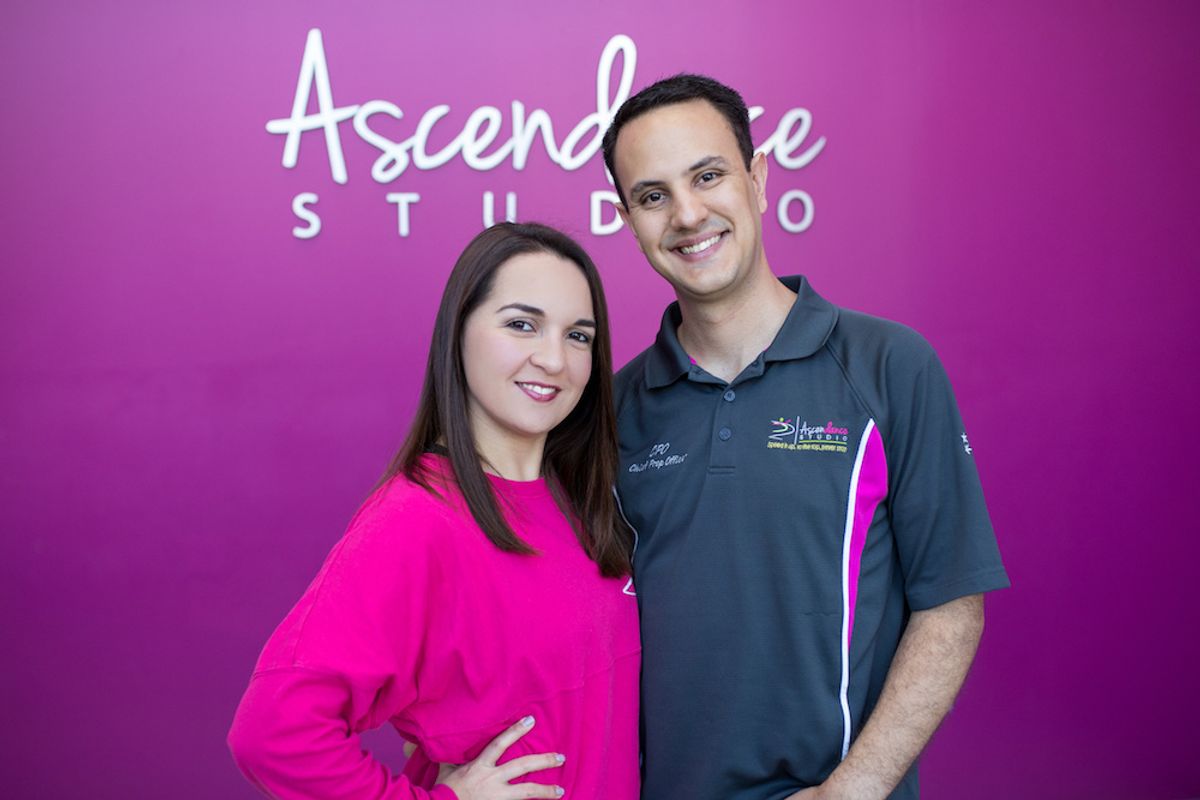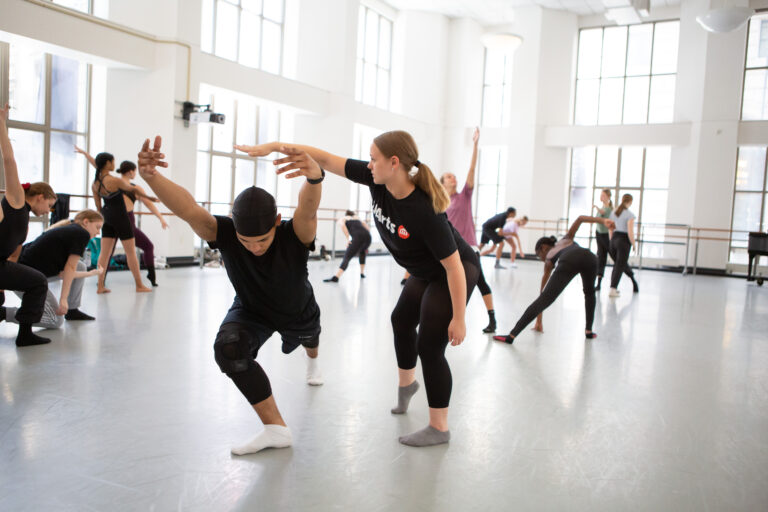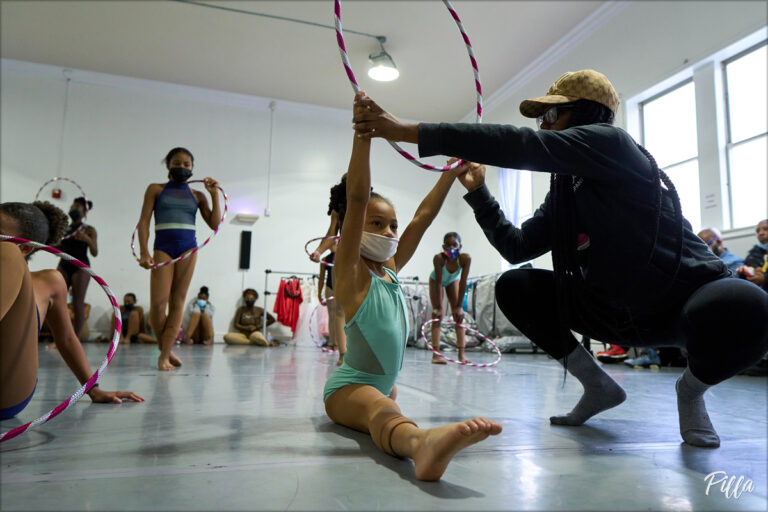
Valentina Bagala and Rafael Savino held their studio’s very first registration at a Subway. “We didn’t even have an office,” says Bagala, who heads the artistic side of Ascendance Studio in Doral, Florida. “This lady called us over the phone, and we said, ‘OK, we can take your registration. Would you mind meeting us at the Subway that’s downstairs from our studio?'”
Now, five years later, Ascendance is thriving, with a growing competitive team, a 5,000-square-foot space and 300 students—one of whom is the same dancer who was registered in that Subway. Today, registration mostly happens online, as do many of Ascendance’s processes—attendance, billing, e-mail marketing campaigns—thanks to Savino, who heads the studio’s marketing, finances and administration. To what do Bagala and Savino credit their impressive growth? Digital advertising. Despite working in an industry where many still rely on old-school methods of operation—manual registration, tuition paid in person by cash or check, fliers handed out in parking lots—they took the plunge to modernize their advertising strategy and found it a game changer for their studio.
Slow, but consistent
Bagala and Savino admit Ascendance got off to a rocky start. They rented space from a fitness studio for three months. “We didn’t get the best schedule,” says Bagala, who could only rent the space by the hour when it wasn’t being used. Still, she managed to amass 25 students. Eventually, she found a small, 550-square-foot space of her own in a shopping center. “I remember for our first classes, we would have people who were supposed to show up but didn’t,” says Savino. “If we had one student in class, we had to teach to that student. That happened multiple times.”
When two more spaces became available in the same shopping center, the couple grabbed them, despite the inconvenience of the units not being connected. “You had to step outside,” says Bagala. “It wasn’t very comfortable.”
“The fliers weren’t working.”
With more space came more responsibility—to increase enrollment. They had been passing out fliers at nearby schools, but that approach, Savino says, “became unscalable. That’s when I started looking at digital advertising.” He didn’t have much money to spend on it—his budget was $5/day—but he began looking into advertising on Google. He also enrolled in a local digital marketing course at nearby Miami-Dade College. “That gave me strategy,” he says.
His most successful venture has been with Google’s AdWords. With this advertising strategy, business owners create a search ad. (Search ads appear above Google search results when people look for local services the business offers.) The Ascendance search ad, for example, includes the studio website and phone number, plus: “Dance classes for kids. All ages and styles. Try a free class today.” Then, you choose keywords—the words or phrases potential customers might type into their browser—and set a daily budget for how much you’d like to “bid” on each keyword. You’re charged only if users click your link. During his first AdWords campaign, Savino often bid less than $1 on keywords like “ballet classes,” “hip-hop classes,” “jazz” and “dance studio.”
How much you bid affects in what order your search ad appears among other businesses. But a business with more money to spend on keywords won’t automatically see their ad pop up first. Multiple factors—keyword bidding price, how long a user stays on your website, your click-through rate—determine what’s called your quality score. And it’s your quality score, ultimately, that decides in what order your ad appears on Google.
“For example, let’s say there’s a huge competitor who’s bidding $10 a keyword, while I’m only bidding $1,” says Savino. “Google is tracking everything. If users stay on my website for a while and don’t click the back button to get back to the search page, Google knows my website is relevant and a good experience.” That increases his quality score and gives his search ad odds a boost.
Experimenting, wisely
Savino ran his initial AdWords campaign for about a month in 2013, starting in mid-September—prime back-to-school time. Each week, he wound up getting 10-plus interested customers. He offered each a free trial class. Of that weekly number, more than 80 percent enrolled in classes. By the time the campaign was over, Ascendance had 45 new students. And it all cost him less than $150. Though he risked spending more than his daily allotted $5, he knew it would pay off in increased enrollment.
As they became more comfortable with AdWords, the couple experimented. Bagala asked her mom what words she would use to search if, for example, she were looking for ballet classes for a 5-year-old. Her responses became part of their strategy: “ballet classes in Doral,” “dance classes in Doral,” “dance studio in Doral.” They also interviewed parents of new students, asking ‘How did you hear about us?’ “If they said, ‘Google,'” says Savino, “we’d ask if they remembered what they typed.”
Now his daily budget is $20, though he’s careful to time campaigns with high-enrollment periods. “During back-to-school season, August and September, I know a lot of people are going to be looking for classes,” he says. “But I also know that January is another high-enrollment period—that’s when we see an uptick in our baby program. Those moms are operating on a calendar year, not a studio year.”
When Google came to town
Last spring, Google itself took an interest in Ascendance, and it featured Savino and Bagala in a national video campaign as a small-business case study. Of particular interest was the studio’s dual advertising campaigns: one in English and one in Spanish. Savino and Bagala are bilingual, and their community is largely Spanish-speaking—so they capitalized on that. “Since we were advertising in Spanish,” says Savino, “those people were sure that they were going to come through our door and someone would be here who would speak their language.”
Of course, digital advertising can only take a studio so far. You have to follow through with a great product—and that, Savino says, is Valentina’s greatest contribution to the business. “At the end of the day, if the product isn’t good, people are simply going to leave,” he says. “She’s the heartbeat of the studio.”




